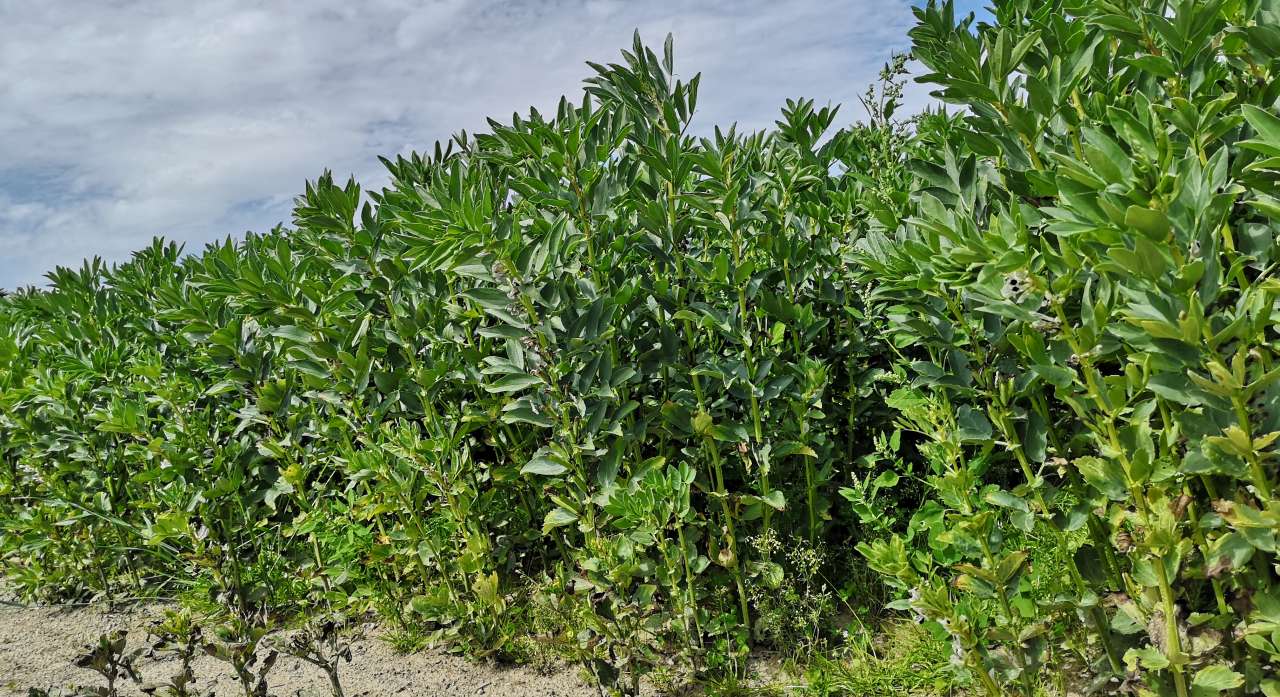Division of Biotechnology and Plant Health
FABANOVA- Climate ready faba beans for the Nordic and Baltic region

End: dec 2026
Start: jan 2023
The project will lead to improved faba bean lines and knowledge that can lead to higher and more stable protein yields in our challenging environment. NIBIO will develop forecasting tools for chocolate spot epidemics, enabling farmers to protect their crops.
| Start - end date | 01.01.2023 - 30.12.2026 |
| Project manager at Nibio | Heidi Udnes Aamot |
| Division | Division of Biotechnology and Plant Health |
| Department | Fungal Plant Pathology in Forestry, Agriculture and Horticulture |
| Partners | University of Helsinki, Swedish University of Agricultural Sciences, Norwegian Univeristy of Life Sciences, Estonian Crop Research Institute |
Plant-based protein has a much lower environmental cost than animal-based -protein. To preserve biodiversity and limit climate change, the world must sustainably intensify food production while lowering attendant greenhouse gas emissions and increasing plant-based dietary protein. Europe depends on imported plant protein for animal feed. The six countries of this call annually import 27 thousand tonnes (kt) of soybean and 537 kt of soybean meal, containing 238 kt of plant protein, while producing 171 kt of plant protein from grain legumes. Doubling production of grain legumes would greatly increase regional self-sufficiency, increase food and feed security, and increase environmental sustainability. For this, a regionally adapted and reliable crop is needed.
Faba bean is a rich source of protein, serving the dietary needs of millions of people and animals. Its production delivers large economic and environmental benefits; as a nitrogen-fixer, it has little need for nitrogen inputs, helping reduce greenhouse gas emissions. In our region, faba bean gives yields and protein content higher than those of the alternative, pea. However, expansion of its use in northern Europe requires improving yield and yield stability through increased abiotic and biotic stress resistance. We focus on faba bean’s most widespread disease, chocolate spot, its most restricting environmental stress, drought, and its most limiting adaptive constraint, growing season length, to identify material with enhance adaptation and yield potential.
We will develop forecasting tools for chocolate spot epidemics, enabling farmers to protect their crops. In field experiments, we will test responses to latitude and weather, while dissecting the components of these responses through controlled-environment experiments. Phenotypic data from these experiments will be combined with genetic and genomic tools and understanding from model systems to identify loci, candidate genes and pathways associated with the desired traits. These will enable allele mining and development of selection tools that breeders can use to accelerate cultivar development. Gene editing will serve to validate candidate genes and to create new allelic diversity. The project will lead to improved faba bean lines and knowledge that can lead to higher and more stable protein yields in our challenging environment, increasing regional protein security and decreasing the pressure for land-use change in soybean-producing countries.
